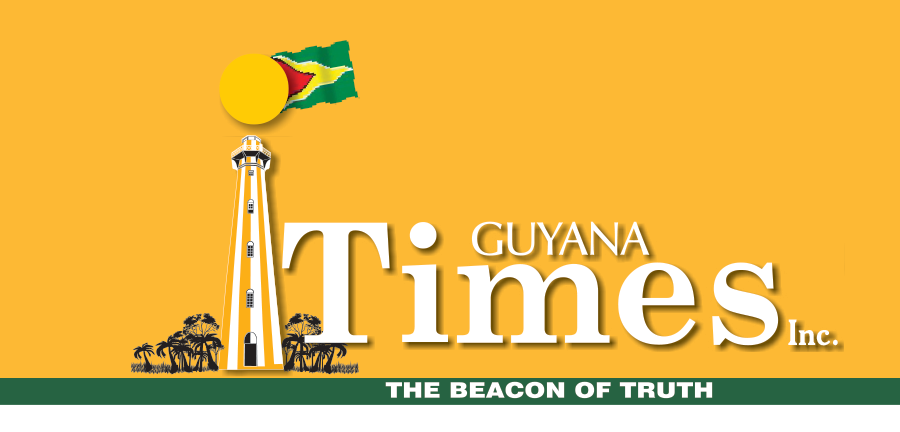Home Affairs Minister Oneidge Walrond on Wednesday explained that although local authorities have made significant progress in removing illicit drugs from the streets, it will take years before major arrests and successful prosecutions of bigger players in the drug trade are achieved.
The Customs Anti-Narcotic Unit (CANU) last year seized and destroyed some 6700 kilograms (kg) of narcotics, of which cocaine amounted to more than 90 per cent – 4400kg of which was linked to the €176 million bust in Region One (Barima-Waini) in August 2024.

This was a significant increase when compared to the 1363kg of narcotics netted in 2023.
For the year 2024, a total of 71 cases were made with regard to illegal substances, from which there were 82 arrests. This is a decrease from the previous year, whereby there were 93 cases made. Moreover, for last year, there were 54 charges laid in relation to drug trafficking; however, 11 were either withdrawn or dismissed.
Responding to questions from the media on clamping down on the drug trade, Minister Walrond explained that “it takes a lot more intelligence and a lot more Police work to get to the leaders of the cartel and bigger fish, and that work is not easy because they are not physically in possession of the drug.”
“So, it takes sometimes years of careful policing work to be able to identify and get enough evidence to bring a successful prosecution over someone [who] you may call a leader of a cartel,” she added.
Nevertheless, the Home Affairs Minister highlighted that, “I do know there is a successful record of getting marijuana and cocaine off of the streets, and we have been seeing those drug busts.”
Just a few months ago, the US Department of Treasury’s Office of Foreign Assets Control (OFAC) updated its Specially Designated Nationals and Blocked Persons (SDN) List to include the four Guyanese who are reportedly linked to trafficking tonnes of cocaine from South America to the United States, Europe, and the Caribbean.
Among them is Senior Superintendent of Police Himnauth Sawh, who previously served as Commander of Region One at the time of the massive drug bust.
Also sanctioned are Paul Daby Jr, called Paul Daby Ramsuchit, Randell, and Rondell; Randolph Duncan, called Rudolph Duncan; and Mark Cromwell, called “Demon” and “Diamond”, a former Police officer.
According to the Treasury Department, the OFAC carried out this investigation in coordination with Homeland Security Investigations (HSI), US Customs and Border Protection (CBP), the Drug Enforcement Administration (DEA) and the US Department of State’s Diplomatic Security Service (DSS) before imposing the sanctions.
According to the Treasury Department, Sawh “…has ensured safe passage to Colombian and Venezuelan traffickers through Region One.”
Moreover, it was noted that Daby Jr and Duncan “…operate the largest drug trafficking organisations in Guyana and rely on maritime vessels and aircraft to conceal and traffic cocaine, while also allegedly bribing Guyanese officials to facilitate their drug trafficking operations.”
The Treasury Department said Daby Jr traffics tonne quantities of cocaine, coordinating the shipment of loads from Colombia and Venezuela via aircraft and utilising illegal airstrips in Guyana. He also relies on a network of individuals to conceal and transport cocaine in shipping containers from the ports of Guyana and Suriname, the Treasury Department said.
It was further outlined that Daby Jr is also involved in transporting illegal gold from Guyana via maritime vessels.
Moreover, the Treasury Department revealed that Duncan traffics cocaine from Guyana to Africa and the Caribbean, with Europe and the United States as the ultimate destinations.
With regard to Cromwell, who is also a former Police officer, he was described by the US officials as “a violent drug trafficker and associate of Daby Jr”.
Meanwhile, according to the US officials, Guyana has been the focus of major US law enforcement operations in the last few years that were done in partnership with Guyanese authorities and resulted in several multi-tonne seizures of cocaine.
Only in March this year, a cargo vessel originating in Guyana was discovered by Police in the waters of Trinidad and Tobago with approximately 182kg of cocaine. Cocaine packages stamped with the Toyota logo, a known trademark of the Sinaloa Cartel, were found on board the cargo vessel.
Additionally, collaboration between US and Guyanese law enforcement resulted in the seizure of 2370kg (5000 pounds) of cocaine in a self-propelled semi-submersible (SPSS) approximately 150 miles off the coast of Guyana on March 21, 2024.
Discover more from Guyana Times
Subscribe to get the latest posts sent to your email.











